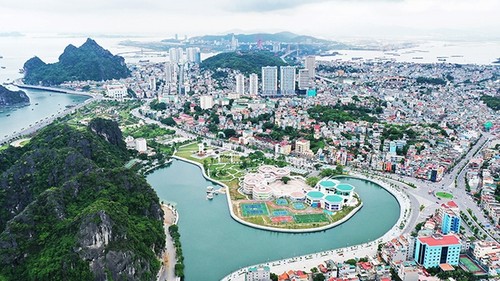 National master plan is designed to realize aspiration for further development (photo: baochinhphu.vn) National master plan is designed to realize aspiration for further development (photo: baochinhphu.vn) |
The National Master Plan reshapes Vietnam’s development space toward the goal set out at the 13th National Party Congress of making Vietnam a high income, developed country.
Under Vietnam’s master plan for the 2021-2030 period, Vietnam must be a unified, undivided by administrative boundaries and its resources must be mobilized and used in the most effective way to serve national interests.
Minister of Planning and Investment Nguyen Chi Dung said: “This is a great opportunity for us to review our development status, our achievements and shortcomings and the reasons behind them in order to re-organize our development space in a unified, holistic manner. After the review, we will design specific national development orientations, and reshape our development space, development roadmap, and development human resources. By so doing, we can overcome challenges, seize opportunities, and make the best use of our potential to develop quickly and sustainably.”
Minister Dung said the national master plan is built on the principle of maintaining a national development space to develop effectively, and synchronously nationwide, promote intra-region and inter-region links, tap local advantages, mobilize and effectively utilize resources, and improve national competitiveness.
Under the plan, development efforts will be focused on regions with favorable geographical conditions, socio-economic infrastructure, development potential, and high-quality human resources, in order to create “locomotive” regions, economic corridors, and growth pillars for sustainable, rapid development.
National development spaces, regions, economic corridors, and urban systems must be connected by a modern, coordinated infrastructure with close links between urban and rural systems and between land and sea areas.
Economic corridors will be established on the north-south and east-west axis to connect sea ports, international border gates, major transport gateways, urban areas, and economic centers.
The plan will facilitate the exploitation and utilization of the air space and the participation of major international economic corridors, connect socio-economic development with the protection of national sovereignty and sovereign rights, and territorial integrity, strengthen national defense and security capacity, and promote extensive, practical, and effective international integration.
The National Master Plan clearly identifies guidelines, ideology, goals, targets, and major orientations for the development of sectors, regions, urban and rural areas, and land border gate systems in the coming time.
The plan focuses on establishing a framework of national infrastructure, transport infrastructure, urban infrastructure, energy, digital infrastructure, and infrastructure for environmental protection, irrigation, natural disaster prevention and control, and climate change response.
Prime Minister Pham Minh Chinh said: “We need to have new mindset and strategic vision in planning. A momentum is created by innovation and strength comes from the people’s determination. A new mindset will create resources and motivation. With a strategic vision, we can identify potentials and competitive advantages on which we can base solutions that bring into play our strengths. Internal resources will play a decisive role and external resources can create breakthroughs.”
With its first comprehensive national master plan, Vietnam will embark on what it hopes will be the quickest, most effective road to achieving the national development goals set out in the 2021-2030 National Socio-Economic Development Strategy and Vision to 2050 which was adopted at the 13th National Party Congress.